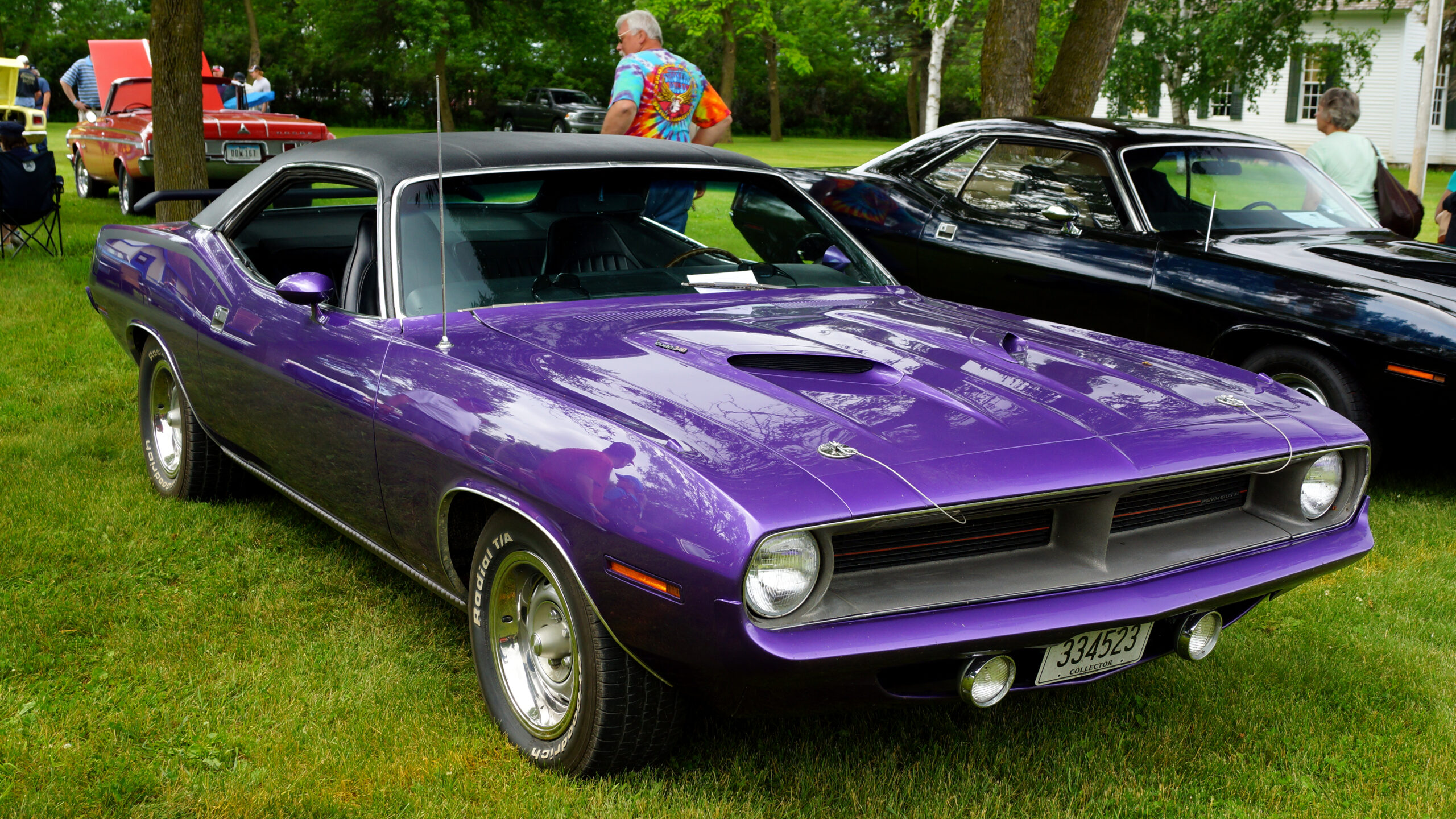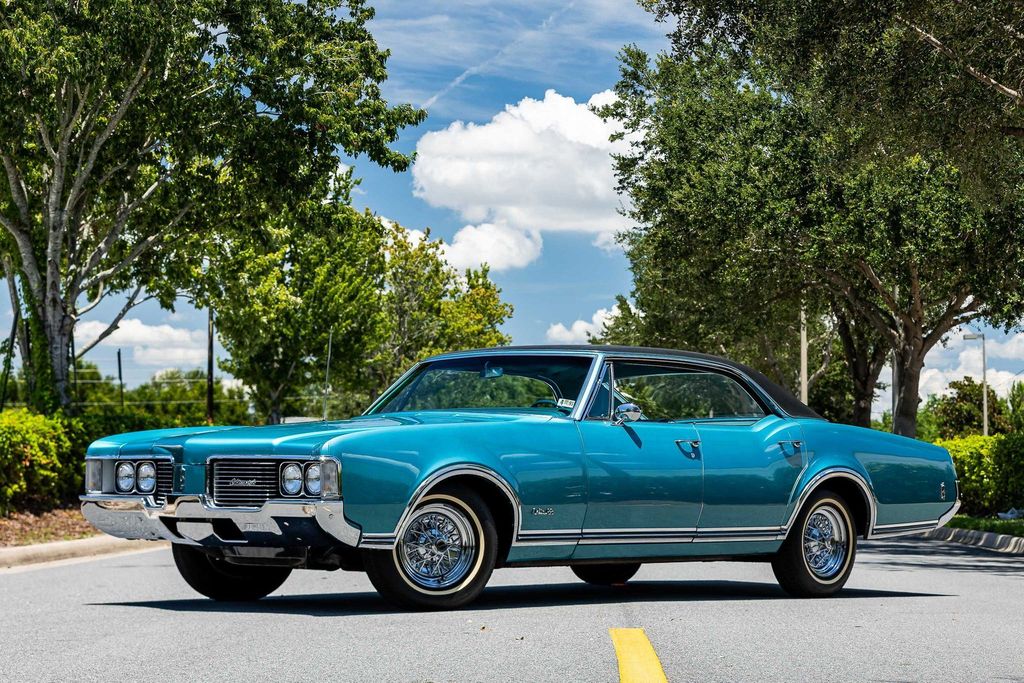
The rumble of a V8, the sleek curve of a fender, the sheer artistry of an automotive legend – there’s something undeniably captivating about classic cars. They’re more than just machines; they’re rolling pieces of history, imbued with character, innovation, and a certain kind of magic that modern vehicles often struggle to replicate. Every now and then, a manufacturer blesses us by reviving a legendary nameplate, marrying that timeless vintage style with the exhilarating performance of today’s technology.
But for every lucky classic that gets a second chance in the spotlight, there are countless others that remain in the annals of history, silently screaming for a triumphant return. The 1960s, in particular, was an absolute explosion of automotive brilliance, gifting us some of the most iconic machines ever conceived. From roaring muscle cars that practically invented their genre to elegant grand tourers that defined luxury, and race-proven legends that rewrote the rulebook, that decade truly had it all.
These weren’t just cars; they were game-changers, cult heroes, and undeniable statements of engineering prowess and artistic design. We’re talking about vehicles that, with the right blend of their original retro charm and a dash of cutting-edge modern tech, could not only make a serious impact in today’s bustling automotive landscape but quite possibly steal the show. Get ready to rev your engines as we kick off a journey through seven of these absolute titans, cars that are practically begging to be brought back.
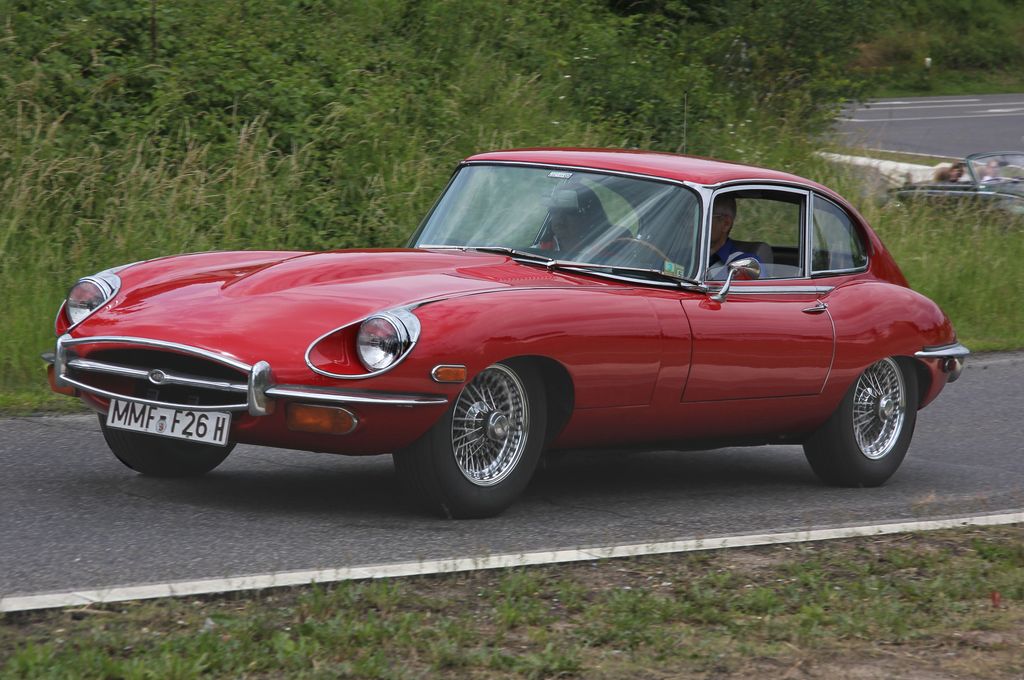
1. **Jaguar E-Type** Let’s kick things off with a true icon, a car so stunning it made even Enzo Ferrari stop and stare: the Jaguar E-Type. It’s not just “widely regarded as one of the most beautiful cars ever built,” but Enzo Ferrari himself “allegedly calling it ‘the most beautiful car ever made.’” That’s some serious praise from a man who knew a thing or two about automotive aesthetics, and it’s a sentiment that still holds true decades later, echoing in the hearts of car lovers worldwide.
Jaguar has dabbled with continuation models in recent years, giving us a taste of that vintage magic with meticulously crafted recreations, but a full-scale, ground-up reboot for the modern era? Now that would be an event for the ages, a true testament to timeless design. The Series 1 and 2 models, specifically, are the ones that car enthusiasts still dream about, known for their “sleek lines, chrome bumpers, and the legendary XK inline-six engine.” Imagine those perfect, flowing classic looks, perfectly preserved and translated, but re-engineered from the ground up for the 21st century’s demands.
The E-Type wasn’t just a pretty face that graced countless magazine covers and posters; it was also a formidable performer. With “up to 265 horsepower from its 4.2 or 3.8-liter engine,” it “had the performance to match” its breathtaking beauty, making it a force to be reckoned with on both road and track. This was a car that could cruise effortlessly on the open highway yet still provide a thrilling, engaging drive when the mood struck, a perfect balance of elegance and potency.
A modern E-Type could take that legacy and run with it, blending that raw, characteristic power with today’s advanced chassis dynamics, sophisticated braking systems, and perhaps even a hint of electrification to make it even more spectacularly efficient and potent. Such a comeback would redefine automotive elegance for a new generation, proving that some designs are simply eternal and that the art of driving can, and should, be a symphony of senses.
Car Model Information: 1962 Jaguar E-Type XKE
Sp: uk
Name: Jaguar E-Type
Caption: 1961 E-Type Series 1 3.8-Litre, the first production model of this open two-seater
Aka: Jaguar XK-E , Jaguar V-12
Manufacturer: Jaguar Cars
Production: 1961–1974
Class: Sports car
Predecessor: Jaguar XK150
Related: Jaguar D-Type,Jaguar XJ13
Successor: Jaguar XJS
Layout: FMR layout
Assembly: Coventry,England
Designer: Malcolm Sayer
Categories: 1970s cars, 2+2 coupés, All articles with dead external links, All articles with specifically marked weasel-worded phrases, All articles with unsourced statements
Summary: The Jaguar E-Type, or the Jaguar XK-E for the North American market, is a British front mid-engined sports car that was manufactured by Jaguar Cars Ltd from 1961 to 1974. Its sleek appearance, advanced technologies, high performance, and competitive pricing established it as an icon. The E-Type’s claimed 150 miles per hour (240 km/h) top speed, sub-7-second 0 to 60 mph (97 km/h) acceleration, largely unitary body construction, front and rear independent suspension with disc brakes, mounted inboard at the rear, and rack-and-pinion steering spurred industry-wide changes.
The E-Type was based on Jaguar’s D-Type racing car, which had won the 24 Hours of Le Mans for three consecutive years beginning in 1955.
The E-Type employed what was, for the early 1960s, a novel design principle, with a front subframe carrying the engine, front suspension and front bodywork bolted directly to the body tub. No ladder frame chassis, as was common at the time, was needed and as such the first cars weighed only 1,315 kg (2,899 lb).
It is rumored that, on its debut on 15 March 1961, Enzo Ferrari called it “the most beautiful car ever made”, but this statement is not fully confirmed. In 2004, Sports Car International magazine placed the E-Type at number one on their list of Top Sports Cars of the 1960s. In March 2008, the Jaguar E-Type ranked first in The Daily Telegraph’s online list of the world’s “100 most beautiful cars” of all time.
Get more information about: Jaguar E-Type
Buying a high-performing used car >>>
Brand: Jaguar Model: E-Type
Price: $269,900 Mileage: 76,725 mi.
Read more about: The Costly Truth: 14 Classic Cars That Are Simply Not Worth Restoring for the Savvy Enthusiast
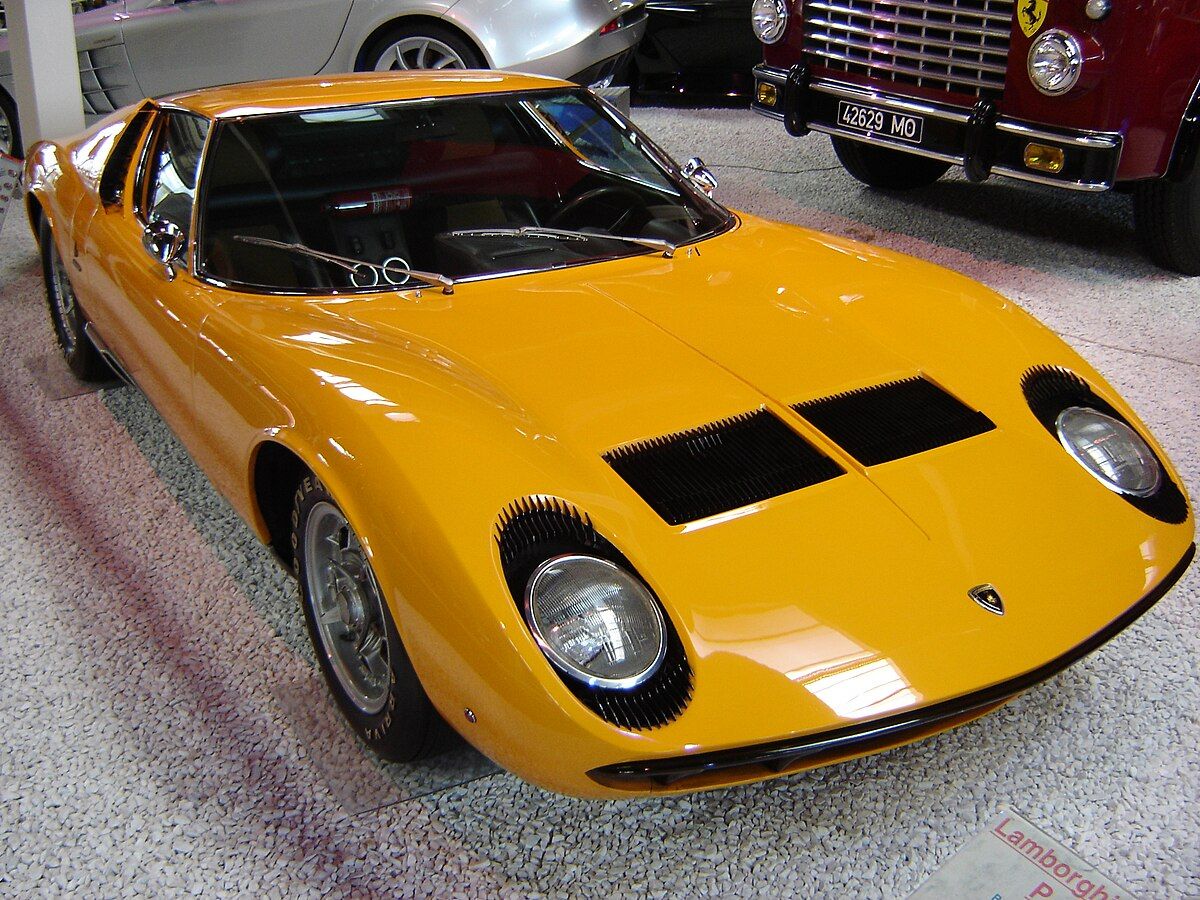
2. **Lamborghini Miura** If there’s one car that single-handedly “went on to define the supercar segment,” it’s the Lamborghini Miura. This wasn’t just a car; it was a revolution, born from the secret ambitions of Lamborghini’s engineers. Initially, “Ferruccio Lamborghini himself” reportedly “dismissed” their clandestine project, only to be completely won over when he saw the finished masterpiece. That’s the kind of underdog story we love, especially when the underdog is a sleek, mid-engined beast that changed everything.
The Miura was powered by “a 3.9-liter V12 that produced 345 horsepower in early models,” a figure that was astonishing for its time and capable of delivering exhilarating speed. But its true genius lay in its revolutionary layout: “Its low-slung, mid-engine layout changed performance car design forever.” This wasn’t just about raw power; it was about shifting the paradigm, proving that the engine could be placed behind the driver for optimal weight distribution and handling, setting the blueprint for virtually every supercar that followed.
A modern Miura would be nothing short of breathtaking. Imagine that “unmistakable wedge shape” brought into the 21st century, meticulously sculpted with “cutting-edge aerodynamics” and advanced materials, all while retaining its iconic profile. It would be a seamless blend of retro-futuristic design and blistering modern performance. Pair that legendary silhouette with “Lamborghini’s latest V12 powerplant,” perhaps hybridized for even more electrifying acceleration and enhanced efficiency, and you’d have a machine that honors its past while firmly embracing the future.
Such a comeback would not only reignite the passion for one of the most beautiful and influential cars ever made but also serve as a powerful statement about Lamborghini’s enduring heritage. It would be a halo car, reminding everyone where the concept of the modern supercar truly began, cementing its place not just in history, but in our contemporary dreams and garages.
Read more about: Beyond the Chrome: A MotorTrend Deep Dive into Vintage Cars That Command Millions Today
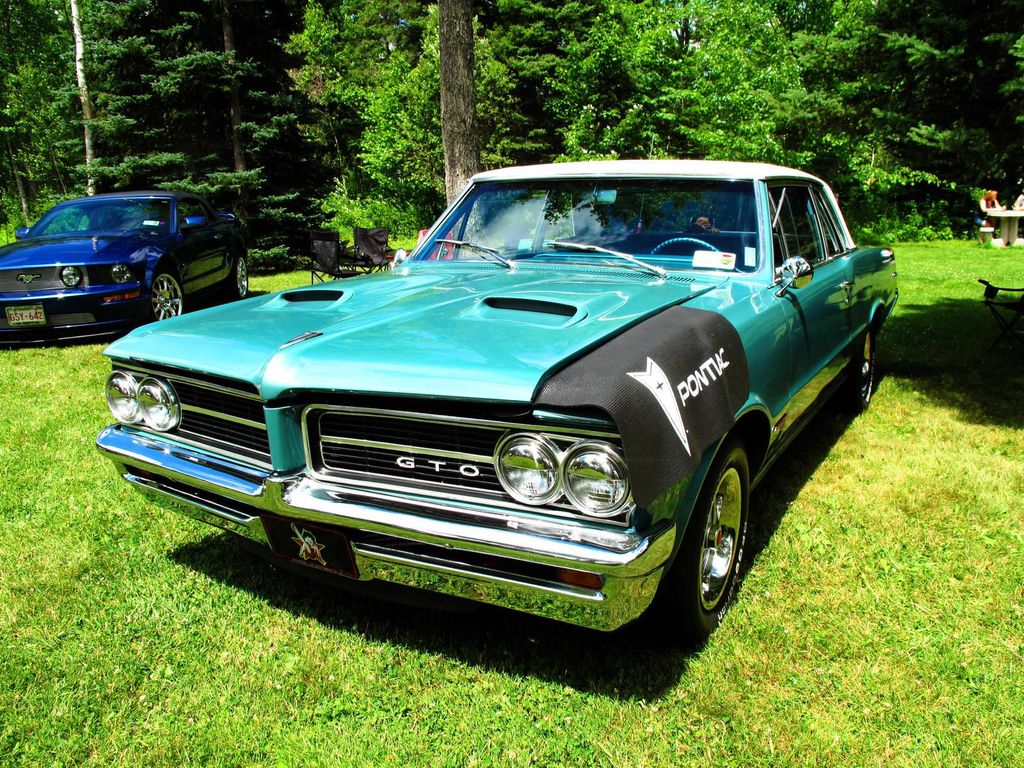
3. **1964 Pontiac GTO** Forget the endless debates about what truly was the “first muscle car;” the 1964 Pontiac GTO is the undisputed champion that “kicked off the movement” as we know it. This car wasn’t just a new model; it was a cultural phenomenon, a bold statement that raw power and performance could be jammed into an accessible package. It was essentially a stroke of genius, taking a humble “midsize Pontiac LeMans” and transforming it into a street-legal monster with a heart of pure American V8.
How did they do it? They “dropped in a massive 6.4-liter V8, and let the horsepower do the talking.” This wasn’t subtle; it was loud, proud, and unapologetically American in its pursuit of speed and street cred. With “up to 325 horsepower and a four-speed manual,” the original GTO “set the standard for what a muscle car should be.” It wasn’t just about the impressive numbers; it was about the attitude, the unmistakable rumble, and the sheer thrill of planting your foot and feeling that V8 roar as you accelerated down the road.
In an era where “muscle cars are shifting toward electrification,” a GTO reboot could offer a much-needed jolt of nostalgia and pure, unadulterated gasoline power. Imagine a modern GTO with faithfully recreated “retro styling” – those iconic twin hood scoops, the aggressive grille, the powerful stance – but underneath, a “modern V8” that respects its heritage while delivering contemporary performance and reliability. It would be “a serious hit,” a visceral experience that connects drivers to the golden age of American horsepower.
This throwback wouldn’t just be for the old-timers; it would introduce a new generation to the raw, unfiltered excitement that defined the muscle car era. The GTO was about accessible power and rebellious spirit, and a modern iteration could capture that lightning in a bottle once more, proving that some legends, particularly those with a thunderous V8, never truly die and are always ready for an encore.
Car Model Information: 1966 Pontiac GTO Coupe
Name: Pontiac GTO
Caption: 2005 Pontiac GTO
Manufacturer: Pontiac (automobile),Holden
Class: Mid-size car,Compact car,Mid-size car
Production: 1963–1974,2003–2006
Predecessor: Pontiac Tempest
Layout: Front-engine, rear-wheel-drive layout
ModelYears: 1964-1974 2004-2006
Categories: 1970s cars, 2000s cars, All articles with unsourced statements, Articles with short description, Articles with unsourced statements from October 2008
Summary: The Pontiac GTO is a front-engine, rear-drive, two-door, and four-passenger automobile manufactured and marketed by the Pontiac division of General Motors over four generations from 1963 until 1974 in the United States — with a fifth generation made by GM’s Australian subsidiary, Holden, for the 2004 through 2006 model years.
The first generation of the GTO is credited with popularizing the muscle car market segment in the 1960s. Some consider the Pontiac GTO to have started the trend with all four domestic automakers offering a variety of competing models.
For the 1964 and 1965 model years, the GTO was an optional package on the intermediate-sized Pontiac LeMans. The 1964 GTO vehicle identification number (VIN) started with 22, while the 1965 GTO VIN began with 237. The GTO was designated as a separate Pontiac model from 1966 through 1971 (VIN 242…). It became an optional package again for the 1972 and 1973 intermediate LeMans. For 1974, the GTO was an optional trim package on the compact-sized Ventura.
The GTO model was revived for the 2004 through 2006 model years as a captive import for Pontiac, a left-hand drive version of the Holden Monaro, itself a coupé variant of the Holden Commodore.
Get more information about: Pontiac GTO
Buying a high-performing used car >>>
Brand: Pontiac Model: GTO
Price: $59,991 Mileage: 4,408 mi.
Read more about: More Than Just a Chassis: Uncovering 12 Catastrophic Design Flaws That Defined Automotive Infamy
4. **First-Generation Ford Mustang** While the Ford Mustang itself has thankfully “is still alive and well” and continues to thrill, there’s something uniquely special about the very first generation. When this legend “debuted in 1964,” it wasn’t just another car; it “introduced the world to the pony car” segment and sparked “a movement that’s still going strong today.” It tapped into a desire for sportiness, style, and personalization that resonated deeply with a generation seeking freedom and expression on the open road.
The design was instantly iconic: “its long hood, short deck, and available V8 power” screamed cool from every angle, making it an immediate hit. It quickly “became an instant classic,” not just for its striking looks but for its accessibility and the sheer variety of options it offered. From economical six-cylinders to roaring V8s, there was a Mustang for everyone, democratizing performance. And for those who craved even more, “Special editions like the Boss 429 pushed it even further,” solidifying its performance credentials.
Imagine a factory-built “tribute to the very first generation,” a modern reboot that captures the essence of that 1964 magic. We’re talking about “retro styling” that meticulously recreates its timeless lines, but under the skin, you’d find all the benefits of modern engineering, including enhanced safety, comfort, and handling. Crucially, it would feature a “naturally aspirated V8,” keeping that classic, visceral engine note alive and well, avoiding the forced induction trend that, while powerful, can sometimes mute the symphony of a traditional V8.
Such a vehicle wouldn’t just be a car; it would be a time machine, allowing enthusiasts to experience the pure, unadulterated joy that “made the early Mustangs so iconic.” It would be a celebration of American automotive ingenuity, a bridge between its storied past and a thrilling future, proving that true legends can indeed be reborn with the spirit intact and performance amplified for contemporary tastes.
Car Model Information: 2024 Ford Mustang GT Premium
Name: Ford Mustang
Caption: 2018 Ford Mustang GT 5.0
Aka: Ford T5 (Germany)
Manufacturer: Ford Motor Company
Production: March 1964 – present
ModelYears: 1965–present
Class: Unbulleted list
BodyStyle: Unbulleted list
Layout: Front-engine, rear-wheel-drive layout
Categories: 1970s cars, 1980s cars, 1990s cars, 2+2 coupés, 2000s cars
Summary: The Ford Mustang is a series of American automobiles manufactured by Ford. In continuous production since 1964, the Mustang is currently the longest-produced Ford car nameplate. Currently in its seventh generation, it is the fifth-best selling Ford car nameplate. The namesake of the “pony car” automobile segment, the Mustang was developed as a highly styled line of sporty coupes and convertibles derived from existing model lines, initially distinguished by “long hood, short deck” proportions.
Originally predicted to sell 100,000 vehicles yearly, the 1965 Mustang became the most successful vehicle launch since the 1927 Model A. Introduced on April 17, 1964 (16 days after the Plymouth Barracuda), over 400,000 units were sold in its first year; the one-millionth Mustang was sold within two years of its launch. In August 2018, Ford produced the 10-millionth Mustang; matching the first 1965 Mustang, the vehicle was a 2019 Wimbledon White convertible with a V8 engine.
The success of the Mustang launch led to multiple competitors from other American manufacturers, including the Chevrolet Camaro and Pontiac Firebird (1967), AMC Javelin (1968), and Dodge Challenger (1970). It also competed with the Plymouth Barracuda, which was launched around the same time. The Mustang also had an effect on designs of coupes worldwide, leading to the marketing of the Toyota Celica and Ford Capri in the United States (the latter, by Lincoln-Mercury). The Mercury Cougar was launched in 1967 as a unique-bodied higher-trim alternative to the Mustang; during the 1970s, it included more features and was marketed as a personal luxury car.
From 1965 until 2004, the Mustang shared chassis commonality with other Ford model lines, staying rear-wheel-drive throughout its production. From 1965 to 1973, the Mustang was derived from the 1960 Ford Falcon compact. From 1974 until 1978, the Mustang (denoted Mustang II) was a longer-wheelbase version of the Ford Pinto. From 1979 until 2004, the Mustang shared its Fox platform chassis with 14 other Ford vehicles (becoming the final one to use the Fox architecture). Since 2005, Ford has produced two generations of the Mustang, each using a distinct platform unique to the model line.
Through its production, multiple nameplates have been associated with the Ford Mustang series, including GT, Mach 1, Boss 302/429, Cobra (separate from Shelby Cobra), and Bullitt, along with “5.0” fender badging (denoting 4.9 L OHV or 5.0 L DOHC V8 engines).
Get more information about: Ford Mustang
Buying a high-performing used car >>>
Brand: Ford Model: Mustang
Price: $44,777 Mileage: 19,563 mi.
Read more about: The Costly Truth: 14 Classic Cars That Are Simply Not Worth Restoring for the Savvy Enthusiast
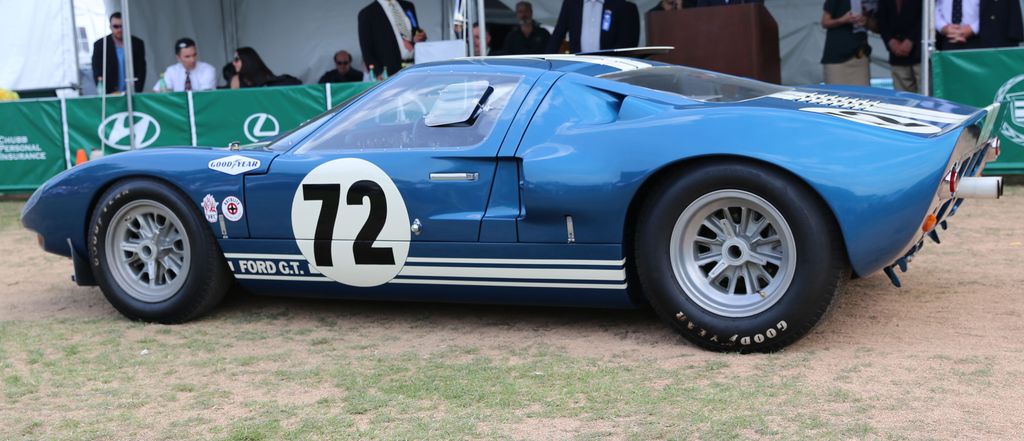
5. **Ford GT40** If we’re talking about pure, unadulterated racing pedigree and a rivalry that burned brighter than any chrome, then “the Ford GT40” is a non-negotiable for a comeback. While Ford has given us “modern supercars inspired by the original,” let’s be honest: “none have quite captured the raw essence of the Le Mans-dominating legend.” This car wasn’t just built to win; it was built out of a fierce determination, a project “born from Ford’s rivalry with Ferrari” to conquer the world’s most grueling endurance race.
The GT40’s mission was clear: it was “designed to win the 24 Hours of Le Mans.” And win it did, spectacularly so, not just once, but “four years in a row from 1966 to 1969.” That’s not just a victory; it’s a dynasty, a testament to the power of American engineering and sheer grit in the face of European dominance. “Powered by a series of V8 engines,” this low-slung, wide machine “remains one of the most iconic race cars ever built,” a symbol of triumph against all odds and a testament to unwavering ambition.
A modern reboot of the GT40 would need to be absolutely uncompromising, “staying true to its lightweight, race-focused roots.” This isn’t about making a comfortable grand tourer; it’s about delivering a raw, visceral, track-focused experience for the road, unburdened by unnecessary luxuries. Imagine a car that channels that exact spirit, perhaps incorporating modern carbon fiber construction and advanced aerodynamic trickery, but still feeling like a direct descendant of the original champion, a purpose-built machine.
Such a vehicle would be more than a supercar; it would be “a game-changer,” a thunderous reminder of Ford’s glorious racing heritage and its capability to challenge the best in the world. It would be a machine that not only pays homage to its legendary past but also sets a new benchmark for performance and engineering, proving that the spirit of Le Mans can indeed live on, burning brighter than ever.
Car Model Information: 1966 Ford GT40
Name: Ford GT40
Caption: Ford GT40 Mk.I in JWA Gulf Oil racing colors
Manufacturer: Ford Advanced Vehicles,John Wyer,Kar Kraft,Holman-Moody,Shelby American
Production: 1964–1969
Assembly: Slough,Los Angeles
Designer: Ron Bradshaw
Class: Group 4 (racing),Group 5 (racing),Group 6 (racing)
BodyStyle: coupé
Layout: MR layout
Engine: Cubic inch,289 CID (4737 cc) V-8,302 CID (4942 cc) V-8,427 CID (6997 cc) V-8
Transmission: Manual transmission
Wheelbase: 95 in
Abbr: on
Length: 160 in
Width: 70 in
Height: 40.5 in
Weight: convert
Successor: Ford P68
Sp: uk
Categories: 24 Hours of Le Mans race cars, All Wikipedia articles needing clarification, All articles needing additional references, All articles that may contain original research, All articles with specifically marked weasel-worded phrases
Summary: The Ford GT40 is a high-performance mid-engined racing car originally designed and built for and by the Ford Motor Company to compete in 1960s European endurance racing and the World Sportscar Championship. Its specific impetus was to beat Scuderia Ferrari, which had won the prestigious 24 Hours of Le Mans race for six years running from 1960 to 1965. As rules of the time required that GT cars were built in dozens and sold, around 100 cars in total have been made, mostly as 289 cu in (4.7 L) V8-powered Mk Is, of which at least 50 were made in 1965, which allowed FIA-homologation as Group-4-Sportscar for 1966 until 1971. This gave the old MK.I car of Gulf-Wyer the chance to enter and win Le Mans in 1968 and 1969 after prototypes had been limited to 3 litre, with the performance of the Ford 7-litre-V8 in the factory 1966 Mk.II and 1967 Mk.IV prototypes causing this rule change, which also banned the 4-litre V12 Ferrari 330P4 and others after 1967. The Mk.III designation was used for some road-legal cars.
The Ford GT40 debuted in 1964, and improvements in 1965 led to Ford winning World Championships categories from 1966 to 1968. The first Le Mans win came in 1966 with three 427 cu in (7.0 L) powered Mk.II prototypes crossing the finish line together, the second in 1967 with the same engine now in quite different US-built Mk.IV prototype chassis similar to the “J-car” mule. In order to lower ever-higher race top speeds, a rule change from 1968 onwards limited prototypes to 3.0 litre Formula 1 engines; the sportscar “loophole”, however, allowed the private JW “Gulf Oil” team to win at Le Mans in 1968 and 1969 running a Mk.I with a 5.0 litre engine.
The GT40 effort began in Britain in the early 1960s when Ford Advanced Vehicles began to build the Mk I, based upon the British Lola Mk6, in Slough, UK. After disappointing race results, the engineering team was moved in 1964 to Dearborn, Michigan, US, to design and build cars by its advanced developer, Kar Kraft. All chassis versions were powered by a series of American-built Ford V8 OHV engines modified for racing.
In the 1966 Le Mans, the GT40 Mk II car broke Ferrari’s winning streak, making Ford the first American manufacturer to win a major European race since Jimmy Murphy’s Duesenberg in the 1921 French Grand Prix. In the 1967 Le Mans, the GT40 Mk IV car became the only car developed and assembled entirely (both chassis and engine) in the United States to achieve the overall win at Le Mans.
Get more information about: Ford GT40
Buying a high-performing used car >>>
Brand: Ford Model: GT40
Price: $110,000 Mileage: 13,350 mi.
Read more about: Beyond the Chrome: A MotorTrend Deep Dive into Vintage Cars That Command Millions Today
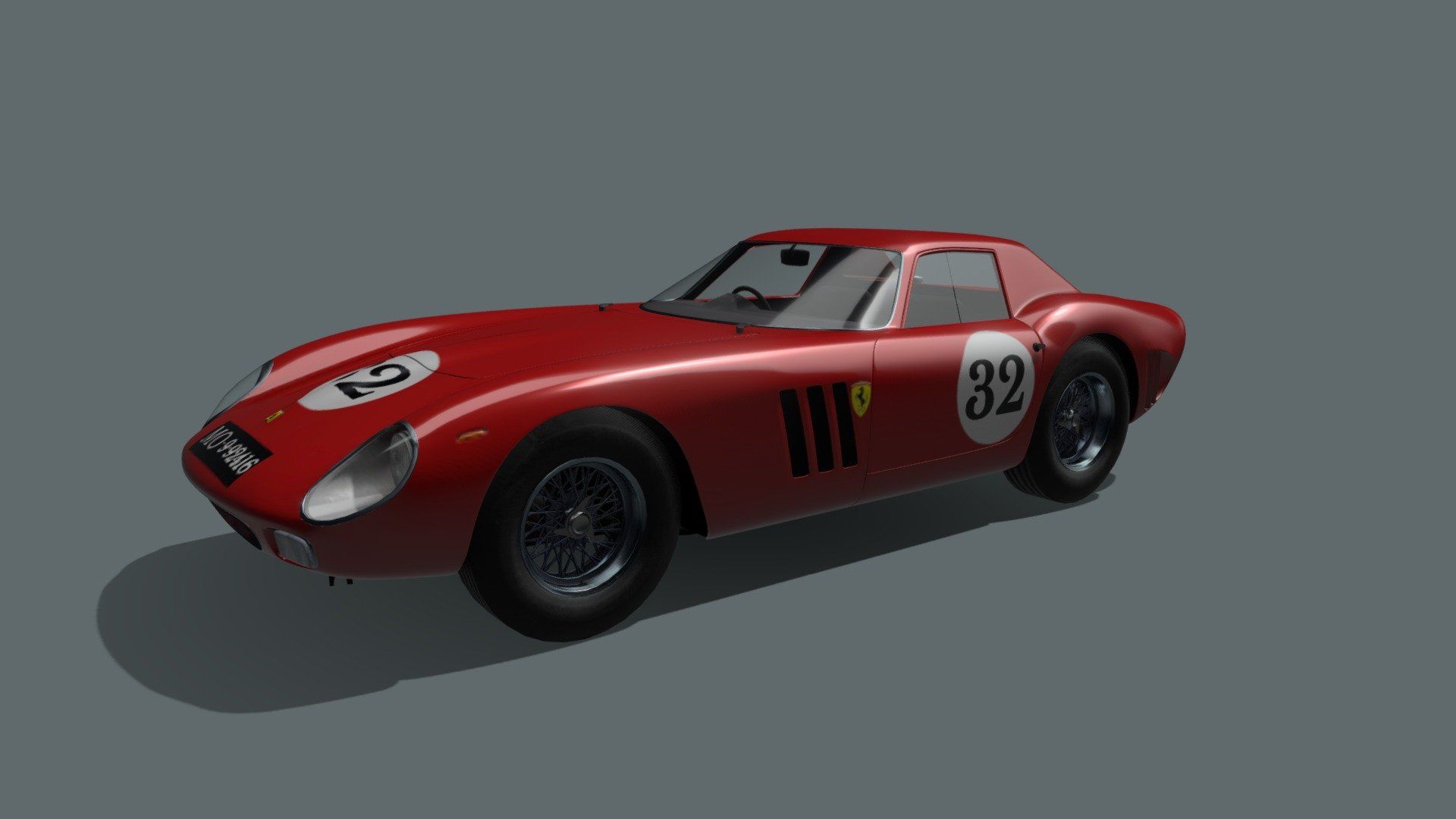
6. **Ferrari 250 GTO** No discussion of legendary 1960s cars, or indeed legendary cars of any era, “isn’t complete without the Ferrari 250 GTO.” This isn’t just a car; it’s automotive royalty, a masterpiece of Italian engineering and design that transcends mere transportation. “Built from 1962 to 1964, only 36 were ever produced,” a scarcity that immediately elevates its status to mythical proportions, making it “one of the rarest and most valuable cars in the world” and a holy grail for collectors.
Underneath its breathtakingly beautiful coachwork, crafted with aerodynamic precision, lay a heart of pure performance: “Powered by a 3.0-liter Tipo V12 producing 296 horsepower,” the 250 GTO was an absolute “force in endurance racing.” It wasn’t just a static collector’s item; it was a formidable competitor, built for speed and endurance, conquering tracks and turning heads wherever it went. Today, it “remains a dream car for collectors,” a pinnacle of automotive aspiration and a symbol of Ferrari’s golden age.
The astronomical value of these machines is staggering, with “one selling for $70 million in 2018,” which makes “it’s clear how coveted these cars are” by the most discerning enthusiasts. A modern reinterpretation wouldn’t just be about recapturing that beauty; it would be about translating its competitive spirit and exclusivity into the 21st century. Imagine “classic styling” meticulously recreated, but under the hood, “Ferrari’s latest hybrid tech,” possibly even a V12 hybrid, breathing new life into the legend with electrifying power and efficiency.
This wouldn’t just be a car for the ultra-wealthy; it would be a statement, a testament to Ferrari’s enduring legacy of combining art and engineering at the absolute highest level. Such a revival would “keep its spirit alive for a new generation,” allowing a select few to experience a taste of automotive perfection, a blend of timeless elegance and cutting-edge performance that only Ferrari can truly deliver.
Car Model Information: 2024 Honda Civic LX
Name: Ferrari 250 GTO
Caption: 1963 Ferrari 250 GTO (chassis 4153GT)
Manufacturer: Ferrari
Production: 1962–1964,(36 produced)
Designer: Giotto Bizzarrini,Scaglietti
Class: Sports car
BodyStyle: berlinetta
Related: Ferrari 330#330 LMB,Ferrari P#250 LM
Layout: FR layout
Engine: 2,953 cc,Ferrari Colombo engine#250,Overhead camshaft#Single Overhead camshatf,Weber carburetor,Compression ratio
Powerout: 300 PS
Abbr: on
Order: flip @ 5500 rpm
Transmission: Manual transmission
Wheelbase: 2400 mm
Length: 4325 mm
Width: 1600 mm
Height: 1210 mm
Weight: convert
Predecessor: Ferrari 250 GT SWB
Successor: Ferrari 250 LM,Ferrari 288 GTO
Categories: All articles lacking reliable references, All articles needing additional references, All articles with bare URLs for citations, All articles with unsourced statements, Articles lacking reliable references from March 2022
Summary: The Ferrari 250 GTO is a grand tourer produced by Ferrari from 1962 to 1964 for homologation into the FIA’s Group 3 Grand Touring Car category. It was powered by Ferrari’s Tipo 168/62 Colombo V12 engine. The “250” in its name denotes the displacement in cubic centimeters of each of its cylinders; “GTO” stands for Gran Turismo Omologato, Italian for “Grand Touring Homologated”.
Just 36 of the 250 GTOs were manufactured between 1962 and 1964. This includes 33 cars with 1962–63 bodywork (Series I) and three with 1964 (Series II) bodywork similar to the Ferrari 250 LM. Four of the older 1962–1963 (Series I) cars were updated in 1964 with Series II bodies.
When new, the 250 GTO cost $18,000 in the United States, with buyers personally approved by Enzo Ferrari and his dealer for North America, Luigi Chinetti. This model has since become highly desired by automobile collectors and sales have repeatedly set price records. The current record for world’s most expensive Ferrari was set in June 2018 when a 1963 250 GTO (chassis 4153GT) was sold in a private sale for $70 million.
In 2004, Sports Car International placed the 250 GTO eighth on their list of Top Sports Cars of the 1960s, and nominated it the top sports car of all time. Similarly, Motor Trend Classic placed the 250 GTO first on a list of the “Greatest Ferraris of All Time”. Popular Mechanics named it the “Hottest Car of All Time”.
Get more information about: Ferrari 250 GTO
Buying a high-performing used car >>>
Brand: Ferrari Model: 250 GTO
Price: $21,650 Mileage: 17,979 mi.
Read more about: Ralph Lauren’s Billion-Dollar Garage: A Master Curator’s Collection of Priceless Automotive Art on Wheels
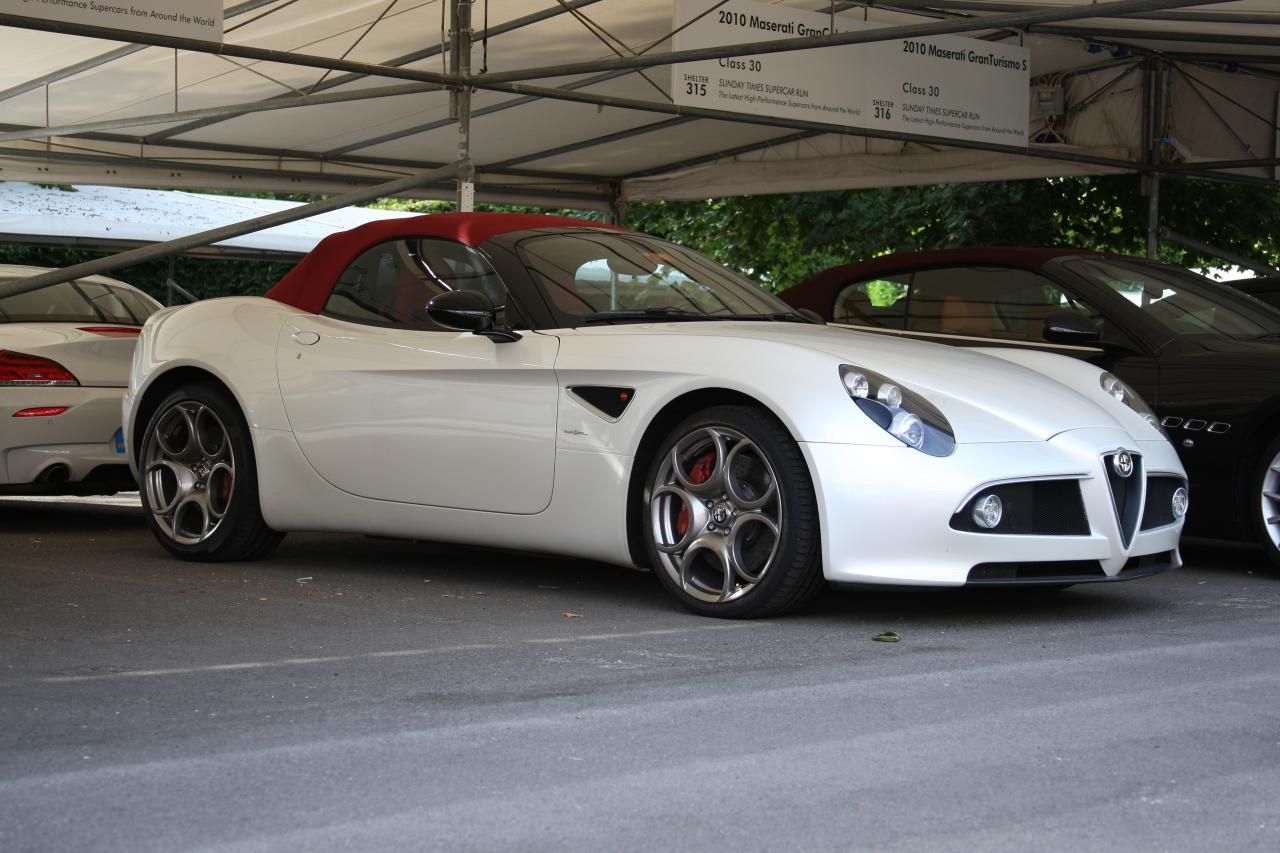
7. **Alfa Romeo Spider** When you think of classic sports cars with undeniable charm and a starring role in pop culture, the “Alfa Romeo Spider” immediately springs to mind. It’s “one of the most recognizable sports cars of all time,” and for many, its image is forever linked to its “starring role in The Graduate,” perfectly embodying the carefree spirit of the era. Introduced in 1966, this Italian beauty perfectly “combined stunning design with the driving character Alfa Romeos are known for,” a blend of passion and performance that few marques can truly match.
The original Spider started its life with a modest yet spirited “1.6-liter engine before later models received larger powertrains,” offering a lively, engaging drive that prioritized connection over outright speed. While it’s true that “the build quality wasn’t always perfect,” a charming quirk of many Italian classics that added to their personality, “nobody cared—it was an Alfa Romeo, after all.” That’s the kind of loyalty and affection this car inspired, transcending minor flaws with its sheer charisma and delightful driving appeal.
A new version of the Alfa Romeo Spider would be a hugely “welcome return,” especially if it successfully “pays tribute to its classic styling” while simultaneously “embracing modern performance and reliability.” Imagine those iconic round headlights, the distinctive boat-tail rear (or Kamm-tail, depending on the series), and that delightful driving position, all wrapped around a modern Alfa platform, offering a contemporary take on classic roadster thrills without the traditional classic car headaches.
Such a car would be an ode to open-top motoring, a vehicle designed to be driven with joy and enthusiasm, feeling the wind in your hair and hearing the engine’s song. It would reignite the flame for affordable, stylish, and engaging sports cars, reminding everyone that driving should be an emotional experience, not just a practical one, and that some feelings are simply timeless and worth bringing back.
Here we go, buckle up again because we’re not done cruising down memory lane just yet! We’ve already celebrated some absolute titans of the 1960s, but that decade overflowed with automotive genius. So many unsung heroes and celebrated legends from that incredible era are practically screaming for a modern-day resurrection. Get ready to fall in love all over again, as we dive into seven more iconic machines. With a dash of modern tech and a lot of heart, these could light up today’s roads and remind us why the ’60s were the golden age of motoring. These aren’t just cars; they’re dreams waiting for a thrilling second act.
Car Model Information: 2024 Honda Civic LX
Name: Alfa Romeo Spider
Caption: Alfa Romeo Spider Series 2 (“Coda Tronca”)
Aka: Alfa Romeo “Duetto”
Manufacturer: Alfa Romeo
Assembly: Grugliasco,Turin
Production: 1966–1993
ModelYears: 1966–1994
Class: Sports car
Layout: Front-engine, rear-wheel-drive layout
BodyStyle: Roadster (automobile)
Related: Alfa Romeo Giulia,Alfa Romeo 105/115 Series Coupés
Designer: Aldo Brovarone
Predecessor: Alfa Romeo Giulietta (750/101)
Successor: Alfa Romeo GTV & Spider
Sp: uk
Categories: 1970s cars, 1980s cars, 1990s cars, Alfa Romeo vehicles, All articles needing additional references
Summary: The Alfa Romeo Spider (105/115 series) is a two-seater, front-engined, rear-drive roadster manufactured and marketed by Alfa Romeo from 1966 to 1994 in four distinct generations, or “series”, each with modifications ranging from modest to extensive.
As successor to the Giulia Spider, the Spider remained in production for almost three decades. The first three series were assembled by Pininfarina in Grugliasco and the fourth series in San Giorgio Canavese. The last Spider of that series was manufactured in April 1993—the last rear-wheel drive Alfa Romeo before the Alfa Romeo 8C Competizione of 2007.
In 2012, FCA Italy and Mazda studied the possibility of jointly developing a new Spider for 2015 based on the Mazda MX-5 platform. Ultimately, FCA and Mazda chose to manufacture a modern interpretation of the Fiat 124 Sport Spider rather than reviving the Alfa Romeo Spider.
Get more information about: Alfa Romeo Spider
Buying a high-performing used car >>>
Brand: Alfa Romeo Model: Spider
Price: $21,650 Mileage: 17,979 mi.
Read more about: Beyond the Chrome: A MotorTrend Deep Dive into Vintage Cars That Command Millions Today
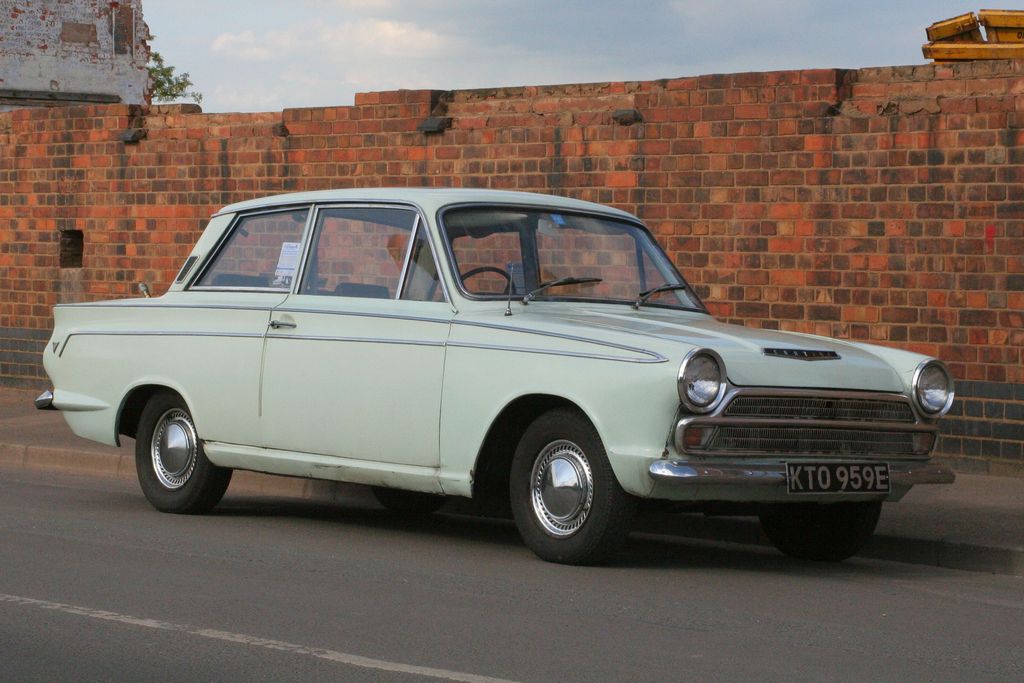
8. **Ford Cortina**Let’s shift gears to a car whose cultural impact was immense, especially in the UK: the Ford Cortina. It “wasn’t a high-performance supercar or a muscle-bound brute,” but as “one of the UK’s best-selling cars,” it became a quintessential part of British life. It brilliantly balanced “affordability, reliability, and fun,” earning its place as the everyman’s champion.
While its “basic design wasn’t groundbreaking” aesthetically, the Cortina’s true legend was forged on the track. This unassuming sedan surprisingly proved its mettle by “taking on larger cars like the Mustang in touring car racing and winning.” An undeniable underdog story.
A modern Cortina could “capture the same lightweight, fun-to-drive spirit,” offering an “affordable, engaging alternative to today’s more bloated sedans.” Such a revival would celebrate understated brilliance, proving that genuine joy and practicality don’t require excessive bulk or a sky-high price tag. It would be a true driver’s car.
Read more about: More Than Just a Chassis: Uncovering 12 Catastrophic Design Flaws That Defined Automotive Infamy

9. **Ferrari 365 GTB/4 Daytona**When Lamborghini launched the revolutionary Miura, Ferrari responded with an equally spectacular, yet quintessentially Ferrari, statement: the 365 GTB/4 Daytona. This “front-engined grand tourer” proved Ferrari could “go toe-to-toe with its mid-engined rival,” asserting traditional Italian automotive might.
Under its expansive hood was a “4.4-liter Colombo V12 producing 347 horsepower,” delivering immense power and a glorious symphony for the ears. The Daytona was also “stunning to look at,” with “its long, aggressive lines” projecting effortless speed and timeless elegance. It was a true icon of its era.
A modern Daytona, infused with the latest Ferrari advancements, would be breathtaking. Imagine “an updated V12” – perhaps hybridized – combined with “classic-inspired styling” reinterpreted for the 21st century. Such a vehicle “could make for one of the best Ferrari grand tourers of the modern era,” embodying the essence of high-speed luxury and performance.
Car Model Information: 2024 Honda Civic LX
Name: Ferrari 365 GTB/4,and GTS/4 “Daytona”
Caption: 1973 Ferrari 365 GTB/4
Manufacturer: Ferrari
Production: GTB/4: 1968–1973 (1,284 produced),GTS/4: 1971–1973 (122 produced)
Assembly: Maranello
Designer: Leonardo Fioravanti (engineer)
Class: Grand tourer
BodyStyle: berlinetta,Roadster (automobile)
Layout: Front-engine, rear-wheel-drive layout
Engine: Ferrari Colombo engine,V12 engine
Transmission: Manual transmission
Wheelbase: 2400 mm
Abbr: on (GTB/4, dry)
Length: 4425 mm
Width: 1760 mm
Height: 1245 mm
Weight: 1200 kg
Predecessor: Ferrari 275#275 GTB/4,Ferrari 365#365 GTC/GTS
Successor: Ferrari Berlinetta Boxer,Ferrari 550 Maranello
Sp: uk
Categories: 1970s cars, All articles with unsourced statements, Articles with hAudio microformats, Articles with short description, Articles with unsourced statements from April 2021
Summary: The Ferrari Daytona is a two-seat grand tourer produced by Ferrari from 1968 to 1973. It was introduced at the Paris Auto Salon in 1968 to replace the 275 GTB/4, and featured the 275’s Colombo V12 with a larger cylinder bore for 4,390 cc (4.4 L; 267.9 cu in). It was offered in berlinetta and spyder forms. The car came in two variants: the 365 GTB/4 coupe, and the 365 GTS/4 convertible.
The Daytona was succeeded by the mid-engined 365 GT4 Berlinetta Boxer in 1973.
Get more information about: Ferrari Daytona
Buying a high-performing used car >>>
Brand: Ferrari Model: 365 GTB/4 Daytona
Price: $21,650 Mileage: 17,979 mi.
Read more about: Golfer Ian Poulter’s Legendary $25 Million Car Collection: A Deep Dive into His Elite Ferraris and High-Performance Machines
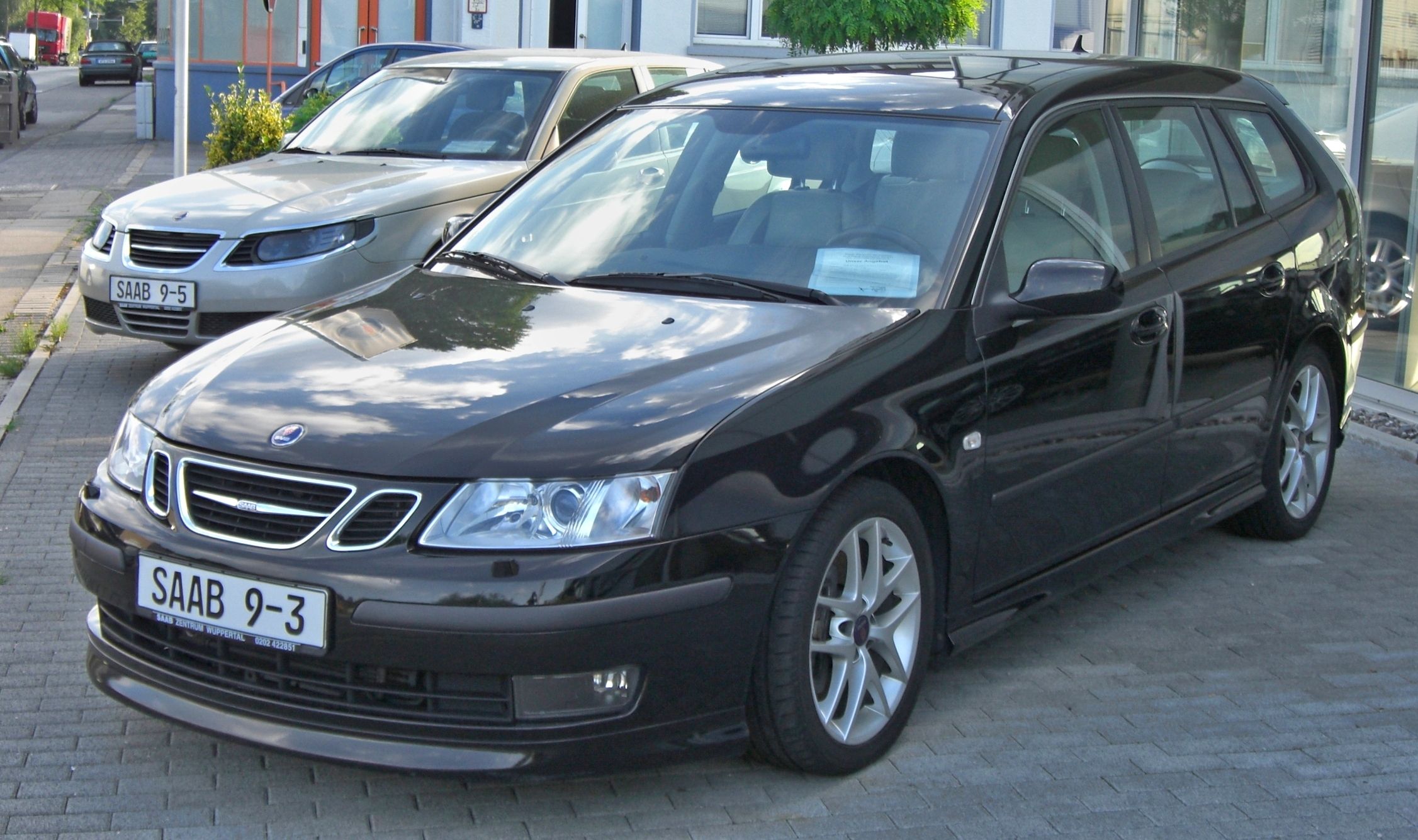
10. **Saab 96**The unique and innovative legacy of Saab lives on, vividly embodied by the Saab 96. Debuting in 1960, this quirky yet robust little car quickly earned “a reputation for its toughness and reliability,” a testament to its aircraft engineering roots and thoughtful design.
The Saab 96 was surprisingly advanced, featuring “independent suspension and dual braking systems introduced in 1964,” innovations that put it “ahead of its time” for safety and handling. Its true legend, however, was forged in rally racing, where it became “a giant killer” in the hands of Erik Carlsson.
A modern Saab 96 would be a fantastic tribute to this rally hero, capturing that “rugged, rally-ready spirit” with contemporary all-wheel-drive and a punchy, efficient engine. Blending its distinctive silhouette with modern safety and infotainment, it would revive the entire Saab ethos: intelligent design, unexpected performance, and quirky individuality.
Car Model Information: 1972 Saab 96 Coupe
Name: Saab 96
Caption: 1972 Saab 96 V4
Manufacturer: Saab Automobile
Production: 1960–1980
Assembly: Trollhättan,Uusikaupunki,Antwerp
Designer: Sixten Sason
Class: Compact car
BodyStyle: sedan (car)
Layout: Front-engine, front-wheel-drive layout
Related: Saab 95,Saab Granturismo
Engine: unbulleted list
Transmission: 3-speed manual,4-speed manual,Saxomat
Wheelbase: 2488 mm
Abbr: on
Length: 4050 mm
Width: 1570 mm
Height: 1473 mm
Weight: convert
Predecessor: Saab 93
Successor: Saab 99
Sp: uk
Categories: 1970s cars, 1980s cars, All articles with dead external links, Articles with dead external links from September 2023, Articles with permanently dead external links
Summary: The Saab 96 is an automobile manufactured and marketed by Swedish automaker Saab from 1960 to January 1980, replacing the Saab 93. The 96 featured aerodynamic two-door bodywork, four-passenger seating and at first a two-stroke, three-cylinder engine, later a four-stroke V4.
Get more information about: Saab 96
Buying a high-performing used car >>>
Brand: Saab Model: 96
Price: $23,900 Mileage: 58,777 mi.
Read more about: Beyond the Big Three: 15 Forgotten Car Brands from the ’60s and ’70s That Deserve Another Look
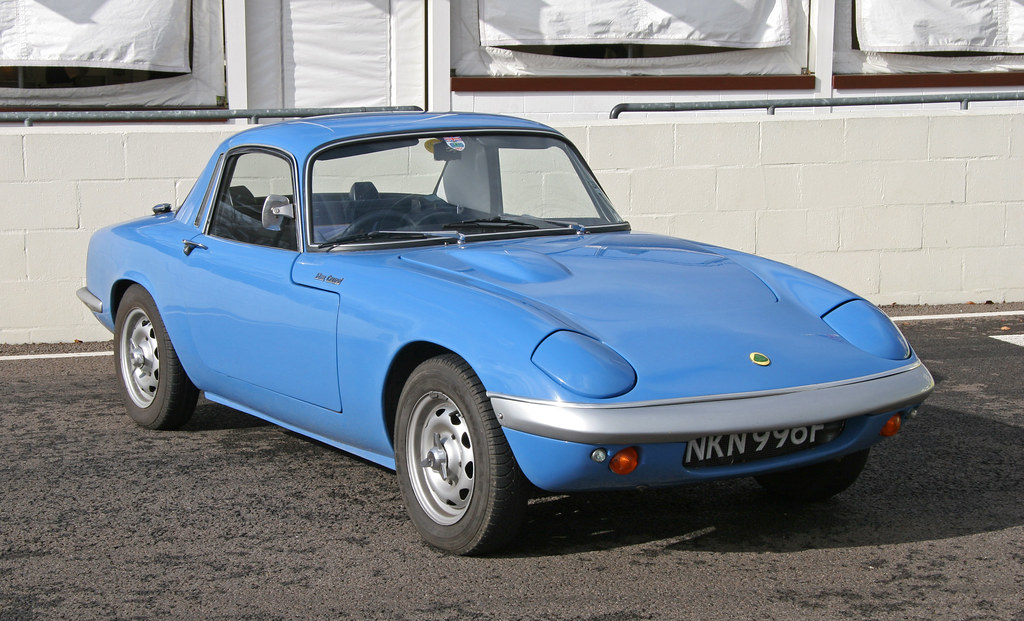
11. **Lotus Elan**For enthusiasts who cherish lightweight construction and sublime handling, the Lotus Elan was a revelation. Produced from “1962 until 1975,” this “sporty two-seater” set a benchmark for agile sports cars. With only “3,300 Elan models produced, and fewer than 1,200 operating today,” it remains a rare and coveted breed.
Revolutionary in its build, the Elan was “the first Lotus road car to be designed with a steel backbone chassis and a fiberglass body.” This innovative approach delivered incredible rigidity and light weight, resulting in phenomenal “handling characteristics” and a car that felt alive, eager to tackle every corner.
A full, global revival of the original Elan’s spirit would be a dream. Imagine a modern Elan honoring its “steel backbone chassis and a fiberglass body” philosophy, perhaps with advanced composites and a perfectly tuned, high-revving modern engine. Such a comeback would powerfully remind us that “lightness is right,” delivering a pure, unadulterated driving experience.
Read more about: Beyond the Showroom: 14 Iconic Classic Cars You Can Restore for Less Than Buying Them
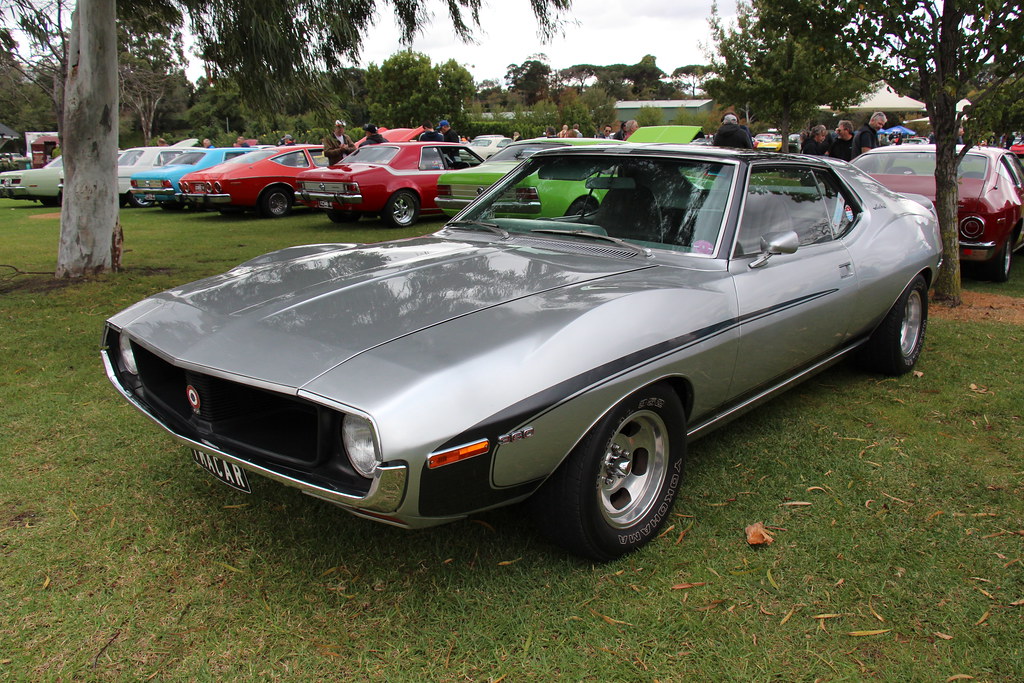
12. **AMC Javelin**In the pantheon of American muscle, the AMC Javelin is a formidable contender deserving of a return. “Manufactured by American Motors Corporation,” this distinctive car “last[ed] for two generations, from 1967 until 1974.” It was a true product of its time, boasting “rear-wheel-drive and a big, powerful engine” that truly “hauled.”
More than just brute force, the Javelin was versatile and “more affordable than other models,” ranging “from a pony to a muscle car.” It even earned a unique distinction as “the first standard vehicle that police officers adopted as their highway car in the U.S.,” thanks to its robust performance and “advanced safety features for its time.”
A modern Javelin would be thrilling. As suggested by forum enthusiasts, its “6.6-liter V8 engine” and “impressive horsepower are worth having again.” Imagine “a redesign” capturing its aggressive stance and distinctive lines, with a state-of-the-art V8. This comeback would celebrate an often-overlooked American icon, bringing back a car with unique style and a powerful, individualistic spirit.
Read more about: 14 Untamed 1970 Muscle Cars That Still Roar and Resonate Today: A MotorTrend Deep Dive
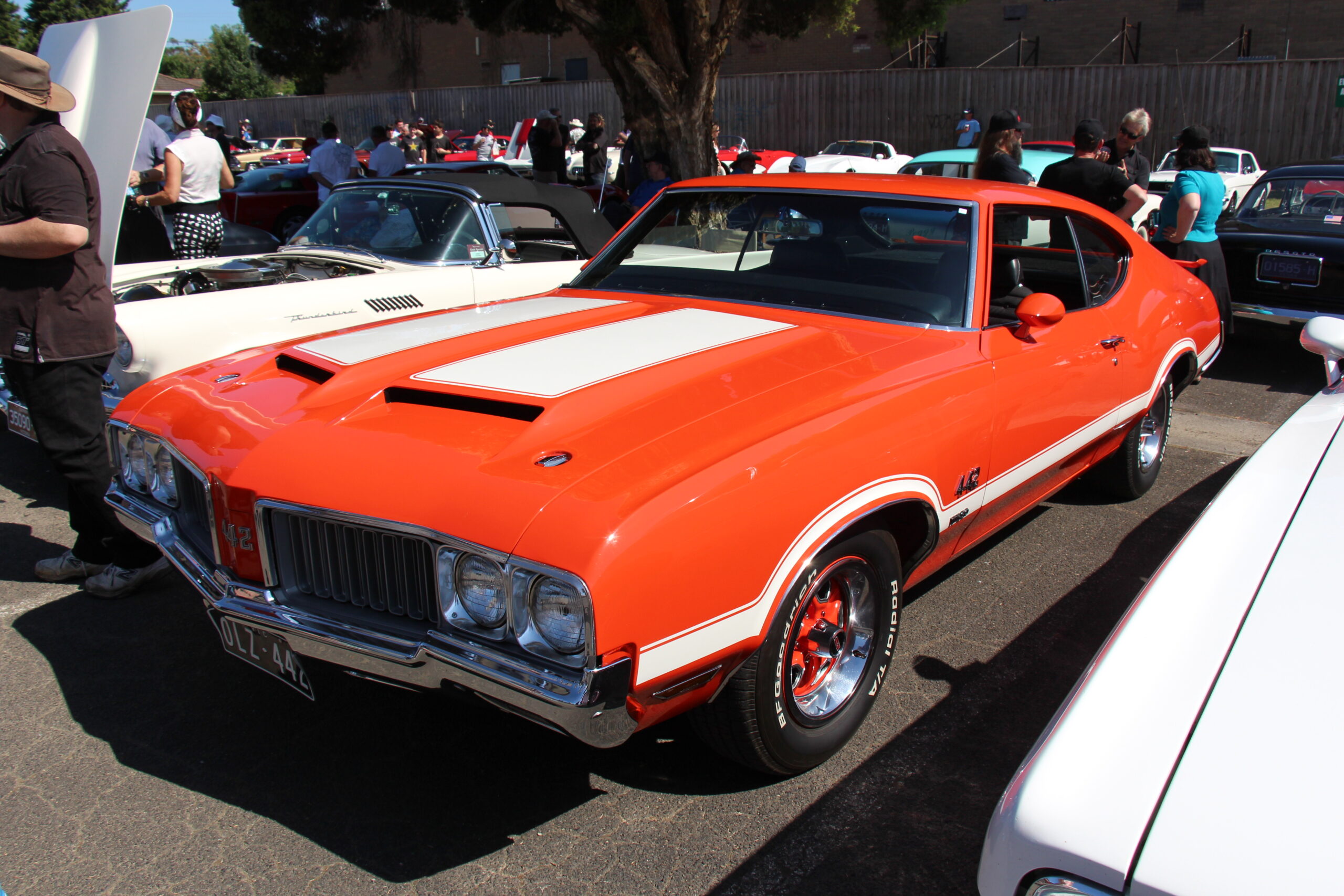
13. **Oldsmobile 442**The 1960s undeniably “pivoted the popularity of muscle cars,” and among the most distinct innovations of that electrifying era was the Oldsmobile 442. As one motorhead fondly explains, it was “a beautifully designed classic that captured the hearts of car lovers during its launch,” offering a unique blend of luxury and brute force.
Its memorable “442” name was a direct nod to its formidable specifications: “its four-barrel carburetor, four-speed manual transmission, and dual exhausts.” This nomenclature honestly highlighted its performance credentials, positioning it as a complete package for those desiring both straight-line speed and a level of refinement.
Despite its impact, the 442 was “unexpectedly retired around the ’70s,” leaving a void many still feel. “Many would love to see a re-engineered version of the Oldsmobile.” Picture a modern 442, faithfully reinterpreting its muscular lines with a contemporary chassis, and under the hood, a powerful, direct-injected V8. Such a comeback would revive a sophisticated muscle car, blending power with poise for a grand American motoring experience.
Car Model Information: 1969 Oldsmobile 442
Name: Oldsmobile 442
Manufacturer: Oldsmobile
ModelYears: 1964–1980,1985–1987,1990–1991
Class: Muscle car
Layout: FR layout
Caption: 1971 Oldsmobile 442
Categories: 1960s cars, 1970s cars, 1980s cars, All articles with unsourced statements, Articles with short description
Summary: The Oldsmobile 4-4-2 is a muscle car produced by Oldsmobile between the 1964 and 1987 model years. Introduced as an option package for US-sold F-85 and Cutlass models, it became a model in its own right from 1968 to 1971, spawned the Hurst/Olds in 1968, then reverted to an option through the mid-1970s. The name was revived in the 1980s on the rear-wheel drive Cutlass Supreme and early 1990s as an option package for the new front-wheel drive Cutlass Calais.
The “4-4-2” name (pronounced “Four-four-two”) derives from the original car’s four-barrel carburetor, four-speed manual transmission, and dual exhausts. It was originally written “4-4-2” (with badging showing hyphens between the numerals), and remained hyphenated throughout Oldsmobile’s use of the designation. Beginning in 1965, the 4-4-2s standard transmission was a three-speed manual along with an optional two-speed automatic and four-speed manual, but were still badged as “4-4-2″s.
Because of this change, from 1965 on, according to Oldsmobile brochures and advertisements, the 4-4-2 designation referred to the 400 cubic inch engine, four-barrel carburetor, and dual exhausts. By 1968, badging was shortened to simply “442”, but Oldsmobile brochures and internal documents continued to use the “4-4-2” model designation.
Get more information about: Oldsmobile 442
Buying a high-performing used car >>>
Brand: Oldsmobile Model: 442
Price: $43,990 Mileage: 24,000 mi.
Read more about: 14 Untamed 1970 Muscle Cars That Still Roar and Resonate Today: A MotorTrend Deep Dive
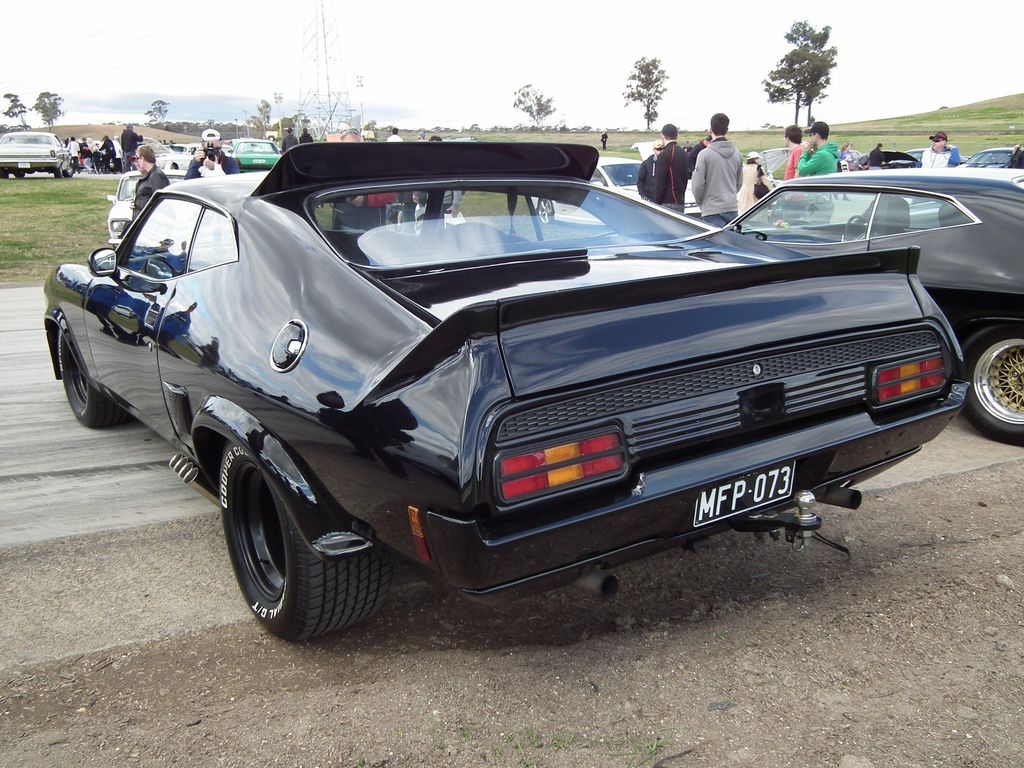
14. **Ford Falcon**For many, the Ford Falcon is forever etched in popular culture, thanks to its starring role in the “Mad Max, Interceptor, or Pursuit Special” films. If you’ve seen those iconic scenes, then “you must have seen the Ford Falcon wheezing through scenes on the silver screen,” its rugged presence amplified by Mel Gibson’s performance.
But the Falcon was far more than a movie prop; it was Ford Australia’s bold and successful “response to the muscle car trend of the ’60s and ’70s.” Its “avant-garde design and performance” carved a unique niche, proving muscle and style weren’t exclusively American. It offered a robust, versatile platform, transforming from an everyday car to a formidable performance machine.
A modern reboot of this global legend would appeal worldwide. Imagine a new Ford Falcon, designed with a nod to its classic, aggressive lines, but built on a cutting-edge global platform. It could feature powerful EcoBoost engines, perhaps even hybrid or fully electric powertrains. This comeback would celebrate resilience and unyielding power, introducing a new generation to an icon that truly epitomized toughness and capability.
Car Model Information: 1964 Ford Falcon Sprint Convertible
Name: Ford Falcon
Caption: 2013 Falcon FG II G6
Aka: Ford Fairmont (Australia),Ford Futura
Manufacturer: Ford Australia
Class: Mid-size car
Production: 1960–2016
Assembly: Broadmeadows Assembly Plant,Melbourne, Victoria
BodyStyle: Sedan (car)
Layout: FR layout
Related: Ford Fairlane (Australia),Ford Territory (Australia)
Predecessor: Ford Zephyr,Ford Zodiac
Successor: Ford Mondeo (fourth generation)
Categories: 1970s cars, 1980s cars, 1990s cars, 2000s cars, 2010s cars
Summary: The Ford Falcon is a full-size car that was manufactured by Ford Australia from 1960 to 2016. From the XA series of 1972 onward, each Falcon and range of derivates have been designed, developed, and built in Australia, following the phasing out of the American-influenced Falcon of 1960 to 1971, which had been re-engineered locally as the XK to XY series for the harsher Australian conditions. The luxury-oriented Ford Fairmont model joined the range from 1965. Luxury long-wheelbase derivative versions called the Ford Fairlane and LTD arrived in 1967 and 1973 respectively with production ending in 2007.
Over 3 million Ford Falcons and its derivatives were made over seven generations to 2016, almost exclusively in Australia and New Zealand, but also South Africa and some RHD Asian markets. Along with its closest rival, the Holden Commodore that was also Australian-made, the Falcon once dominated the fleets of taxis in Australia and New Zealand, as well as police and company fleets.
In its last incarnation as the FG X series, the body style of the Falcon range consisted of sedan and utility body styles. Luxury variants of the current model Falcon, collectively known as the G Series, were marketed as the Ford G6, G6 E, and G6 E Turbo, which replaced the long-standing Fairmont and Fairmont Ghia models. Previously the Falcon range also included a hardtop coupé, panel van and station wagon (respectively up to 1978, 1999 and 2010)., as well as the Futura variant. The Falcon platform had also spawned luxury models such as the Landau coupe and long-wheelbase Fairlane and LTD sedans.
In May 2013, Ford Australia announced the end of local production, which consisted of Falcon and its closely related Territory crossover SUV, by October 2016. This decision was attributable to Ford Motor Company’s “One Ford” product development plan introduced in 2008 to rationalise its global range. Under this plan, Falcon’s indirect replacements are the fourth-generation Mondeo from Europe and the sixth-generation Mustang from North America, the latter to retain Ford’s Australian V8 heritage. The final Ford Falcon, a blue XR6, rolled off the production line on 7 October 2016.
Get more information about: Ford Falcon (Australia)
Buying a high-performing used car >>>
Brand: Ford Model: Falcon
Price: $19,999 Mileage: 80,732 mi.
Read more about: The Costly Truth: 14 Classic Cars That Are Simply Not Worth Restoring for the Savvy Enthusiast
There you have it – fourteen incredible machines, spanning the glorious breadth of the 1960s, each a testament to a golden age of automotive design and engineering. From elegant European grand tourers defining luxury and speed, to gritty American muscle cars inventing their own genre, and rally-proven legends punching well above their weight, this era truly gifted us automotive poetry in motion. The thought of these classics returning, not just as museum pieces, but as vibrant, cutting-edge vehicles reimagined for the 21st century, is exhilarating. They represent more than just cars; they symbolize an unbridled passion for driving, a commitment to distinctive design, and an adventurous spirit often missing today. Bringing them back isn’t just about nostalgia; it’s about injecting much-needed character, performance, and pure, unadulterated joy back onto our roads. It’s about remembering that the best designs are often timeless, and with the right blend of heritage and innovation, the legends of yesterday can indeed become the game-changers of tomorrow.


